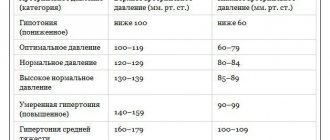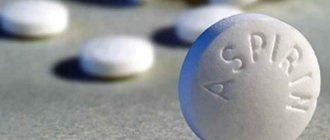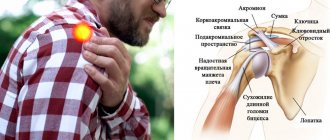In this article you will find out whether running is harmful or beneficial for the heart and why you need to train it.
The beneficial effects of physical activity on the cardiovascular system have been proven by numerous studies and examples. But it is important to know that an irrationally selected load or incorrect structure of the training process can lead to a negative effect on both the body as a whole and the heart in particular.
That is why both professional and amateur athletes must be under constant medical supervision and train according to an individual training plan.
How the heart works
To understand how running affects the heart, you need to know how the cardiovascular system works in its normal state - at rest.
The main organ of the cardiovascular system is the heart. During contraction of the heart muscle, blood is released into the systemic and pulmonary circulation. Through the systemic circulation, blood is distributed to all systems and organs, including the upper and lower extremities. And the pulmonary circulation enriches our lungs with oxygen.
With each contraction of the heart, approximately 140-160 ml of blood is released into the circulatory system of a healthy person, this value is called the stroke volume of the heart (SV). To calculate how much blood is ejected per minute, it is necessary to multiply the stroke volume by the heart rate (HR), this value is called the cardiac output (MCV) and averages 3-5 l/min.
Study from abroad
The Journal of Molecular and Cellular Cardiology published the results of a study by a group of scientists who studied the effects of active strength training on the condition of people with heart problems. The experiment was carried out on rats. “Our studies in rats with heart failure show that exercise reduces the severity of the disease, improves heart function and increases performance. And training intensity is really important to achieve this effect,” says NTNU researcher Thomas Stelen .
Article on the topic Prevention of flaming motor. How to influence heart age In the study, scientists found that exercise improves a number of important heart functions. For example, cells begin to process calcium better and transmit signals to the heart more efficiently. Due to this, as scientists note, the heart beats more energetically and can resist dangerous rhythm disturbances. Moreover, from the data they obtained, it turned out that the loads must be quite intense in order to reverse a number of pathological processes in the heart.
Russian doctors also express their opinions on physical training and the work of unhealthy hearts. They note that an insufficient level of physical activity has a bad effect on the functioning of the heart. “In general, physical activity at any level is good for your health. The choice of the level of physical activity and its dosage depend on the person’s current health status, his lifestyle, the presence or absence of bad habits, the functional state of the cardiovascular, respiratory, and muscular systems, the body’s endurance and the goal that the patient wants to achieve. You should choose the type of physical activity that brings pleasure to a person and is accessible to him,” advises Vera Larina , Doctor of Medical Sciences, Head of the Department of Polyclinic Therapy, Faculty of Medicine, Federal State Autonomous Educational Institution of Higher Education Russian National Research Medical University named after. N.I. Pirogov.
Old age is cancelled! How to avoid heart problems Read more
It should be understood that not all loads are equally indicated for different age groups. “A physically adapted young body can withstand an almost unlimited load: according to WHO, young people are currently men and women under the age of 45. In the older age group, it is worth remembering that not everything is clear; of course, one cannot deny the benefits of walks, outdoor activities, gymnastic exercises, and housework, gardening or vegetable gardening. But high-intensity physical activity is not beneficial for everyone, and that is why all groups of people exposed to extreme stress must be under the supervision of doctors. The line between health and ill health, unfortunately, is very fragile, each person has his own threshold, beyond which the consequences of intense physical activity become unpredictable,” says Vladimir Larin , Ph.D., Associate Professor of the Department of Polyclinic Therapy, Faculty of Medicine, Federal State Autonomous Educational Institution of Higher Education Russian National Research Medical University them. N.I. Pirogova.
Why you need to train your heart
During exercise, especially running, the impact on the heart increases. This leads to certain adaptive reactions on the part of the cardiovascular system:
- The heart increases in size due to an increase in the volume of the heart cavities. Thus, the minute volume of blood circulation becomes larger, and the blood supply to skeletal muscles and internal organs improves.
- Like any other muscle, with regular training the heart hypertrophies and, as a result, the capillary network grows. Thus, the heart is better supplied with blood.
- Thanks to regular jogging, the heart begins to work in a more economical mode, and the initial heart rate decreases. As a result, it is much easier for a person to control his emotions, and stress no longer leads to a sharp increase in heart rate.
We can talk a lot more about the positive effect of running on the cardiovascular system, but it must be remembered that the processes of cardiac hypertrophy are physiological in nature only as long as the growth of the capillary network keeps pace with the increase in myocardial mass.
Training plans for marathon and half marathon. and start preparing today.
With excessive physical exertion, body temperature rises, sweat compensates for this load, but fluid loss occurs and the blood thickens. This can cause blood clots to form. With the loss of fluid, potassium and sodium are excreted, a deficiency of which can lead to various heart rhythm disturbances.
It is important to remember the drinking regime here. And if a person already has chronic diseases that are contraindications for playing sports, exercise can aggravate the condition and lead to complications.
Read on: How much water should runners drink?
Causes of the problem
Pain in the heart area is also called cardialgia. As a rule, the cause of cardialgia is the presence of some pathology in the body.
Such pathologies include:
- Angina pectoris. This disease is characterized by damage to the coronary vessels, which causes problems with blood supply to the heart.
Respiratory diseases. Pathologies of the lungs often cause pain in the heart due to insufficient oxygen saturation of the blood.- Metabolic disorders in the myocardium. Dysfunction of the biological and chemical processes in this muscle leads to tissue weakening and possible necrosis if left untreated.
- Congenital or acquired myocardial defects.
- Atherosclerosis. This pathology occurs due to the accumulation of cholesterol in the vessels. Cholesterol deposits prevent free blood circulation, so internal organs (including the heart) do not receive nutrients and oxygen in the required volume.
In addition to the listed diseases, cardialgia can be caused by arrhythmia, aneurysms and other diseases.
Important! The patient may not even be aware of pathologies of the cardiovascular and respiratory systems, since they manifest themselves precisely during cardio load, especially when its intensity increases.
A specialist who should be contacted before starting training will help identify possible diseases.
Pain can also occur for the following reasons:
- Excessive load. If a novice athlete is not physically prepared enough, then too high an intensity can only damage the body and cause cardialgia.
- Spasms of intercostal muscles. These muscles play an important role in deep and rapid breathing. When glycogen is depleted and there is a lack of oxygen, convulsions can occur, and they already cause pain in the heart area. This pain is usually localized to a specific area and is worse on the left if the person leans to the right.
Muscles used when running
- Drinking alcoholic beverages.
- Poor nutrition or overeating.
- Smoking. The negative effect of tobacco smoke on blood vessels causes a narrowing of their walls, as a result of which the vessels lose strength.
A healthy lifestyle is not limited to just jogging. To maintain physical fitness, it is important to follow a whole range of measures, including proper nutrition and giving up bad habits.
Can you harm your heart by running?
Excessive physical activity negatively affects the cardiovascular system and can lead to a state of overtraining and the formation of a pathological sports heart. If the growth of the capillary network does not keep pace with the growth of the myocardium, this leads to a deterioration in the blood supply to the heart - myocardial ischemia.
The transition from a physiological “sports heart” to a pathological one and the development of heart failure usually occurs gradually and unnoticed by the athlete. That is why it is necessary not only to focus on your good health, but also to support all this with objective data - electrocardiography, echocardiography and stress testing.
Symptoms
Quite often, people who are actively involved in sports or, on the contrary, who have started physical activity relatively recently, note that their heart hurts after heavy lifting, running, or jumping. However, the heart muscle is not always the culprit of painful sensations. To identify heart problems yourself, it is recommended to pay attention to the following symptoms:
- Pain in the chest area, indicating problems with the myocardium, can be pulling or aching.
- The pain syndrome is paroxysmal in nature and can last for seven to fifteen minutes.
- The most common localization of pain is the area behind the sternum, that is, behind the central bone.
A particularly important point is the following: problems with the myocardium, associated with the appearance of painful sensations, are almost always accompanied by fluctuations in blood pressure.
What to consider when planning your workouts
First of all, before starting jogging, you must undergo a medical examination and establish the level of so-called “initial health.”
It is also very important to monitor your heart rate during exercise. By your heart rate you can judge the intensity of physical activity for your body. The most accurate pulse zones for constructing the training process can be determined using treadmill testing with gas analysis and blood sampling.
This test will show such important indicators for runners as maximum oxygen consumption (VO2) and anaerobic metabolic threshold (ANT). Based on these indicators, one can judge the athlete’s fitness, and with further repeated testing, evaluate the effectiveness of the training process.
Why does your heart hurt when running and what to do about it?
Heart pain when running is mostly pathological. Most often, such sensations can occur due to myocardial circulatory insufficiency. If you experience discomfort in the chest, you should stop physical activity, restore breathing and immediately consult a doctor.
The screening method in such a situation will be electrocardiography and ECHO-CG (ultrasound of the heart). Of course, when such complaints appear, it is better to supplement the examination with stress testing, since at rest there may not be any changes in the electrocardiogram.
Causes
If your heart hurts after running on a treadmill, this may indicate a number of serious diseases, common among which are:
- Myocardial dystrophy. The pathology is a dystrophic lesion of the heart muscle, provoked by the presence of bad habits, heavy physical activity, and excess body weight.
- Coronary insufficiency is a violation of blood flow in the coronary arteries.
- Ischemic disease.
- Thrombophlebitis is the formation of thrombotic masses in the cavities of blood vessels and arteries.
- Hypertension.
Painful sensations in the chest that occur after playing sports often bother people who lead a sedentary lifestyle. Pain in this case is a signal that the myocardium cannot cope with intense loads, and the vascular system transports a significantly increased volume of blood.










